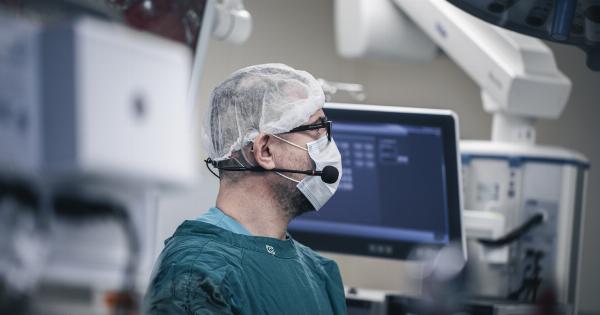Ovarian cancer is one of the leading causes of cancer-related deaths among women worldwide. Over the years, surgical techniques and technologies have evolved to improve the outcomes of ovarian cancer surgery.
Robotic surgery has emerged as an innovative approach, offering numerous advantages over traditional open surgery or laparoscopic procedures. In this article, we will explore some of the latest techniques in robotic ovarian cancer surgery that are revolutionizing the field.
1. Robotic-Assisted Total Pelvic Exenteration
Total pelvic exenteration is a complex procedure performed for advanced ovarian cancer. It involves the removal of the uterus, cervix, ovaries, fallopian tubes, upper vagina, and nearby lymph nodes.
Robotic-assisted total pelvic exenteration enables surgeons to perform this extensive surgery with greater precision and minimal invasiveness, resulting in faster recovery times for patients.
2. Single-Site Robotic Surgery
Single-site robotic surgery is a technique where all surgical instruments are inserted through a single incision, usually in the belly button.
This approach reduces the number of incisions and minimizes scarring, making it an attractive option for patients concerned about cosmetic outcomes. The da Vinci Surgical System is commonly used for single-site robotic ovarian cancer surgery.
3. Hyperthermic Intraperitoneal Chemotherapy (HIPEC)
HIPEC is a specialized technique that delivers heated chemotherapy directly into the abdominal cavity after surgery. This procedure helps target any remaining cancer cells and improves patient outcomes.
Robotic surgery combined with HIPEC offers improved precision and control, allowing surgeons to deliver chemotherapy at optimal temperatures without affecting healthy tissues.
4. Sentinel Lymph Node Mapping
The detection of lymph node involvement is crucial in ovarian cancer staging and treatment planning.
Sentinel lymph node mapping using near-infrared fluorescence (NIRF) technology helps identify the first lymph node(s) that cancer cells are likely to spread to. Robotic surgery provides the necessary precision to perform this technique, aiding in accurate staging and reducing the need for extensive lymph node dissections.
5. Robotic Nerve-Sparing Techniques
Nerve-sparing techniques in robotic ovarian cancer surgery aim to preserve nerve function and therefore improve postoperative outcomes. Resection of pelvic nerves can lead to urinary and sexual dysfunction.
Robotic surgery enables surgeons to visualize and spare delicate nerves more easily, reducing the risk of these complications.
6. Robotic-Assisted Interval Cytoreduction
Interval cytoreduction is a surgical procedure performed after neoadjuvant chemotherapy to remove any remaining visible tumors. Robotic-assisted interval cytoreduction offers enhanced visualization, dexterity, and precise tumor dissection capabilities.
This technique allows surgeons to perform more extensive cytoreduction, maximizing the chances of achieving complete tumor removal.
7. Fluorescence-Guided Surgery
Fluorescence-guided surgery is a cutting-edge technique that utilizes fluorescence imaging to visualize tumors and vital structures during surgery. Specific dyes are injected into the patient prior to surgery, which accumulate in the tumor tissue.
During the operation, the fluorescence imaging system helps surgeons differentiate between normal and cancerous tissues. Robotic surgery facilitates this technique by providing a stable and magnified view of the operative field.
8. Augmented Reality-Assisted Surgery
Augmented reality is an innovative technology that superimposes virtual images onto the real surgical field, aiding surgeons in precise tumor localization and anatomical orientation.
This technology allows the surgeon to visualize vital structures, such as blood vessels, in real-time. Incorporating augmented reality into robotic ovarian cancer surgery enhances surgical accuracy and reduces the risk of complications.
9. Robotic-Assisted Para-Aortic Lymphadenectomy
In patients with advanced ovarian cancer, para-aortic lymphadenectomy helps assess the spread of cancer and determine appropriate treatment strategies.
Robotic-assisted para-aortic lymphadenectomy offers improved visualization, finer dissection capabilities, and reduced blood loss compared to traditional approaches. This technique enhances the accuracy of lymph node staging, guiding personalized treatment decisions.
10. Robotic-Assisted Radical Hysterectomy
Robotic-assisted radical hysterectomy is a minimally invasive surgical procedure used in the treatment of early-stage ovarian cancer. This technique involves the removal of the uterus, cervix, upper vagina, and nearby lymph nodes.
Robotic surgery provides enhanced visualization and dexterity, allowing surgeons to perform this delicate procedure with precision. Patients can benefit from reduced blood loss, shorter hospital stays, and faster recovery times.




























